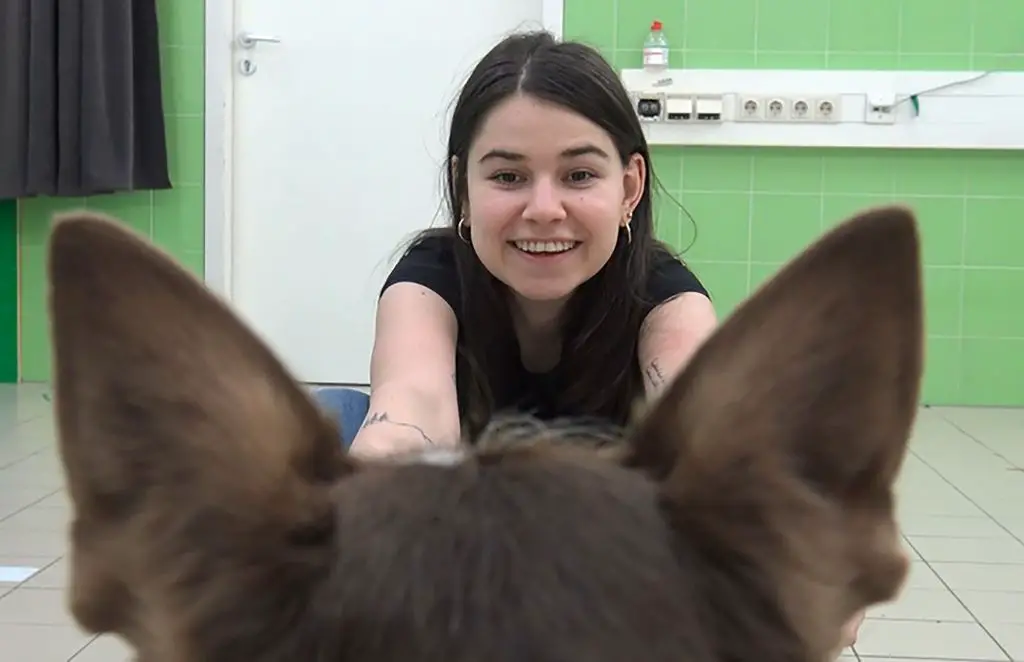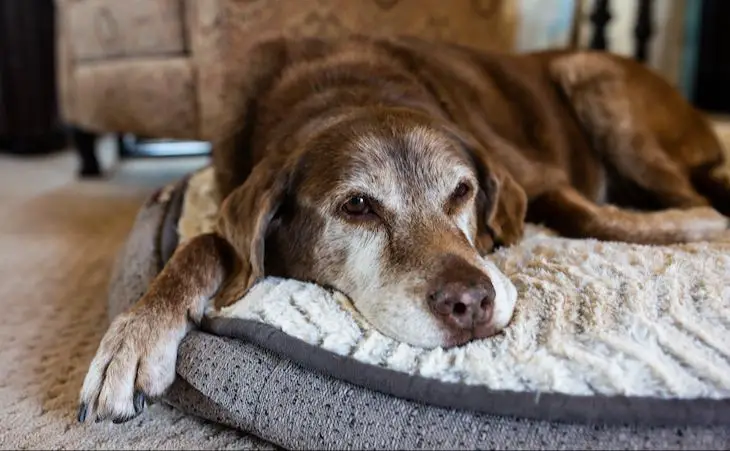The Bond Between Humans and Dogs
Humans and dogs have a unique bond that has developed over thousands of years of co-evolution between our two species. Dogs were the first domesticated animal, originating from wolves over 15,000 years ago. Since then, dogs have evolved to become man’s best friend.
Dogs are extremely skilled at reading human body language and emotions. Through their long history with humans, they have become attuned to our facial expressions, gestures and tone of voice. The communication and understanding between a dog and their human is one of the closest relationships between two different species on Earth.
Scientists have found that the human-canine bond is facilitated in part by the hormone oxytocin. Oxytocin is produced in both humans and dogs during warm interactions like petting, playing and snuggling. This hormone helps promote feelings of love, trust and wellbeing. Oxytocin helps forge that deep connection between humans and their canine companions.

Dogs Understand Love Through Actions
Dogs have a deep capacity to feel love, although they express it differently than humans. For dogs, love is associated with actions and behaviors that strengthen the bond between pet and owner. While humans express love through words, dogs connect love to quality time spent together through activities like play, exercise, training and cuddling.
When you regularly do things with your dog like take them on walks, groom them, or play fetch in the backyard, they interpret these caring behaviors as love. The little moments of joy you share and the care you provide by feeding, exercising and spending time with your pet are what matter most to dogs. Your dog feels loved when you make them happy with fun playtime and give them the attention and physical affection they crave.
Dogs thrive on personal interaction and any quality time spent together only deepens the bond. Your dog knows how much you care for them because you make the effort to maintain your friendship every day through thoughtful gestures and shared activities you both enjoy. Your dog understands love by the way you treat them with patience, empathy and compassion.
Dogs Recognize Their Owners
Dogs form strong bonds with their human owners and can identify them through various senses. A dog’s sense of smell is exceptionally strong, allowing them to recognize their owner’s unique scent. Even if they cannot see their owner, dogs can pick up on their familiar smell. Dogs also recognize their owner’s voice, able to distinguish their tone and language. When separated from their owner, dogs may whine, pace, or wait anxiously by the door. Some studies have shown that dogs exhibit signs of separation anxiety when their owner leaves. This reaction shows how attuned dogs are to their owner’s presence and how deeply they feel that attachment.

Dogs Feel Emotions
Dogs experience a range of basic emotions similarly to humans. Happy dogs often have relaxed open mouths, loose wiggly bodies, and alert ears facing up. Sad dogs may whimper, mope around, have ears back or down, and avoid eye contact. Fearful dogs usually tuck their tails, cower, and tremble. Anger can cause dogs to growl, bare their teeth, stiffen their bodies, and stare intensely.
Over time, dog owners become familiar with their pet’s unique moods and mannerisms. Changes in a dog’s typical temperament or behavior can signify emotional disturbances or health issues. For example, a normally energetic dog that becomes very lethargic and disinterested may be depressed or sick. Being attentive and empathetic to a dog’s emotional state allows owners to properly care for their pet’s needs.
Dogs Sense Human Emotions
Dogs are intuitive creatures and possess an innate ability to pick up on human emotions. Our canine companions notice subtle cues like tone of voice, facial expressions, and body language. They can detect shifts in our mood and energy based on these signals.
When humans are happy, dogs often reflect this joyful state back through excited tail wags, play bows, and attentive gazing. The dog will want to engage in play, seek affection, and stay close by your side when you are in a positive mood.
In contrast, when a human is angry, anxious, sad or stressed, a dog will react accordingly. The dog may cower, tuck its tail, hide, or act more subdued in response to a human’s negative emotional state. Some dogs try to comfort their owners by nuzzling, pawing, or leaning against them when sensing despair or grief.
It’s clear dogs pick up on our subtle emotional cues. Their ability to read us helps dogs form deeper bonds and emotional connections with their human caregivers. They tune into our inner states and respond with their own form of empathy and compassion.
End of Life Behavior Changes
As dogs age and start to decline, their behavior often begins to change gradually. Where a younger pup may have been energetic and playful, senior dogs tend to slow down and sleep more. You may notice your aging dog seeming more tired, sleeping longer stretches, or having difficulty with stairs or jumping up onto furniture. Their senses like vision, hearing, and smell can decline in old age as well.

However, one change many owners report as their dogs near the end of life is increased affection and closeness. Your dog may follow you more closely, want to be near you at all times, and desire more petting, cuddling or lap time. Dogs are very intuitive creatures and seem to understand when their time is limited. As the end draws nearer, dogs often seek more contact and quality time with their human companions. They find comfort in your touch and affection. Your dog likely finds peace and reassurance sensing your presence nearby.
Saying Goodbye
Saying goodbye to your canine companion can be one of the hardest things you ever have to do. Making the most of your remaining time together and having a meaningful ending will provide comfort during the grieving process.
If your dog’s health is declining, spend as much quality time together as possible. Go for gentle walks, give extra treats and affection, take photos and paw prints to cherish. Having keepsakes will be meaningful during your grieving.

When it’s time, consider at-home euthanasia so your dog passes on in a familiar, comforting place, surrounded by loved ones. If euthanizing at the vet, stay with your dog during the process so he’s not alone in the end. Your dog will draw strength from your presence.
While incredibly difficult, being present for your dog’s last moments allows you to say a loving goodbye, ensure he’s at peace, and create closure through a meaningful ending.
Grieving Process
Losing a beloved dog is an extremely difficult experience. As with any significant loss, the grieving process takes time and involves various emotional stages. It’s important to be patient with yourself and allow all feelings to arise. Common stages pet owners go through include:
Denial – At first, many find it hard to accept their dog is truly gone. You may expect to see them in their usual spots around the house. Denial helps cushion the initial shock of loss.
Anger – Frustration or anger often comes next. You may ask “Why did this happen to my precious dog?” Anger helps us blaming external forces and deal with injustice.
Sadness – As reality sets in, profound sadness emerges. You miss everything about your beloved companion. Crying and withdrawal are normal during this depressive stage.
To help yourself through the grieving process, reminisce about joyful memories with your dog. Create a photo collage or paw print tribute. Although these feelings can be overwhelming, the intense pain does diminish in time. Focus on self-care and know your dog felt deeply loved. You gave them a wonderful life.
Coping With the Loss
Losing a beloved pet can be absolutely devastating. The grief may feel overwhelming, especially right after your dog passes away. However, there are healthy ways to process your pain and eventually move forward. Here are some tips for coping with the loss:
Join a pet loss support group. Connecting with others going through the same heartbreak can provide much-needed comfort. Many shelters and veterinarians host free groups where you can share stories and advice.
Limit social media use if it’s too painful. Seeing happy photos of pets could further upset you during the initial mourning period. Take a break from sites that trigger your grief.
Consider eventually adopting again. When you’re ready, welcoming a new dog into your life helps restore hope. But don’t rush into it until you’ve had time to properly grieve.
Don’t ignore your feelings. Bottling up emotions can be harmful. Have a good cry, pour your heart out in a journal, or talk to close friends.
Create a memorial. Doing something to honor your pet’s memory, like framing his photo or planting a tree, can aid closure.
Be patient with yourself. There’s no right or wrong way to grieve. Healing takes time, so take it one day at a time.
Finding Closure
The loss of a beloved dog can leave you with a tremendous void. While the pain may feel unbearable, find comfort in cherished memories and the happy times you shared. Reflect on the joy your dog brought into your life, and take solace knowing you provided the best life possible.
Dogs have an innate ability to sense emotions, so rest assured your dog knew how much you loved him. The belly rubs, playtime, treats, and snuggles all communicated your bond. Your loyal companion felt that love every day of his life right up until the end.
While grieving takes time, eventually the pain will subside. Focus on the positives and find activities to fill the emptiness. Consider volunteering at an animal shelter or adopting a new rescue dog when you’re ready. Your former pet would want you to be happy and to open your heart again. Although he is no longer here physically, your memories will keep his spirit alive.